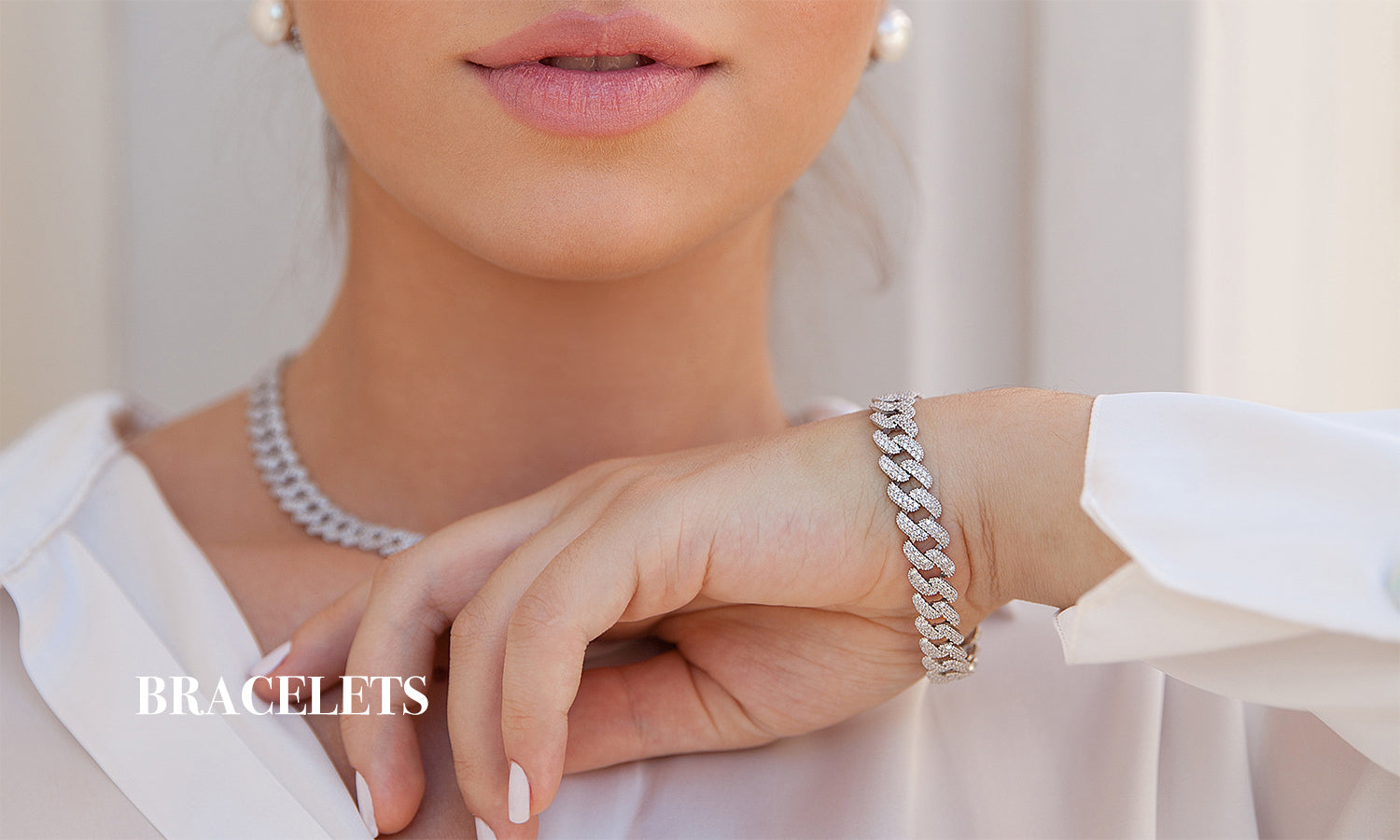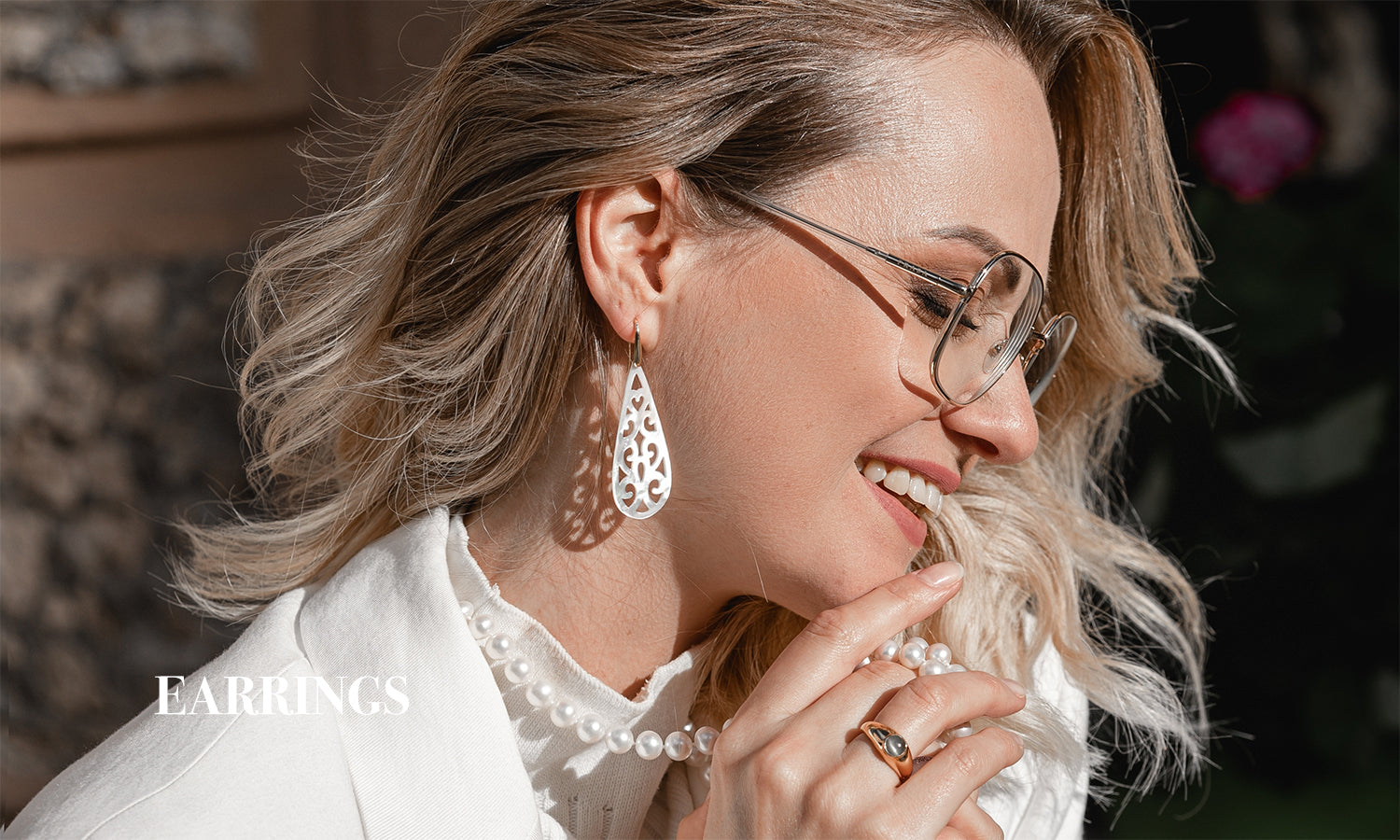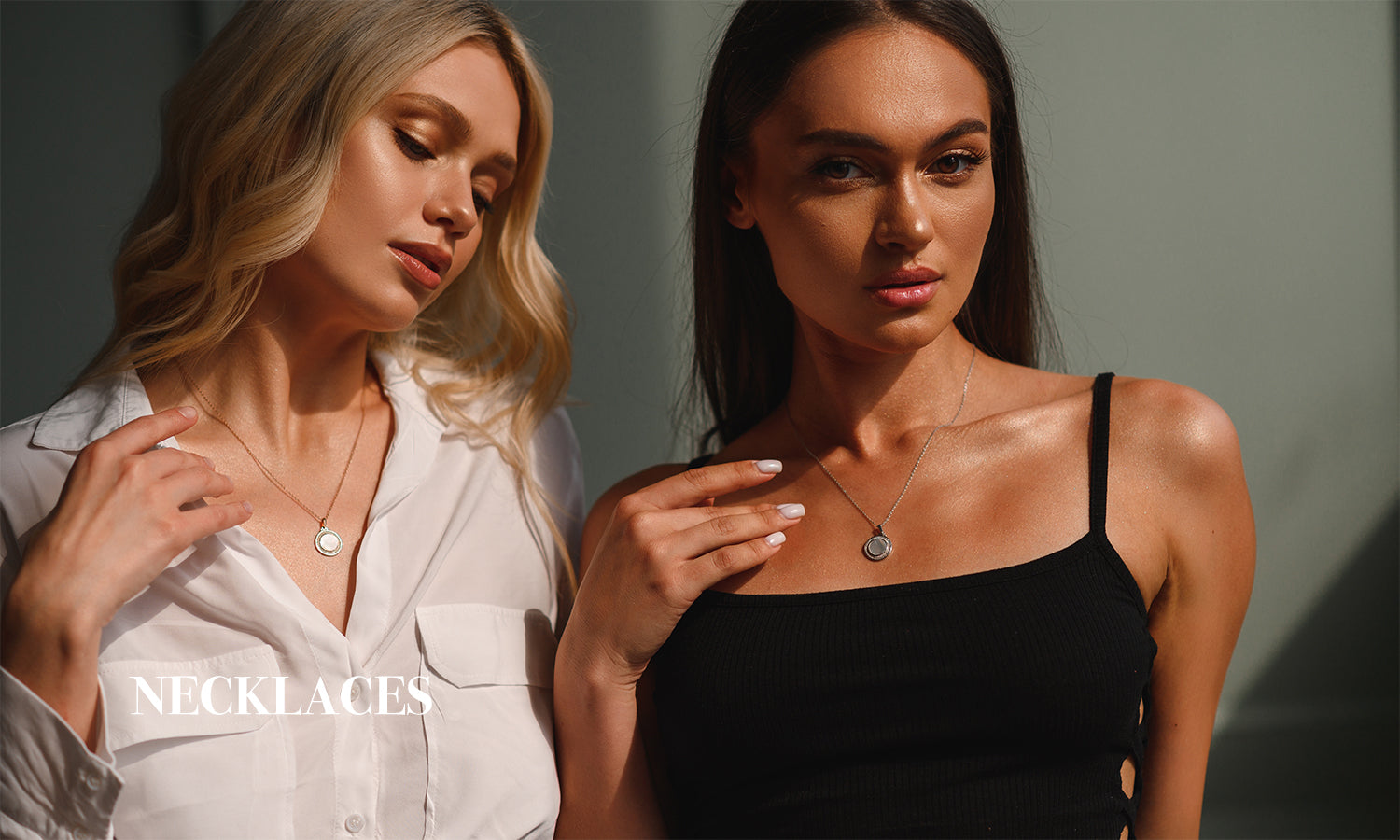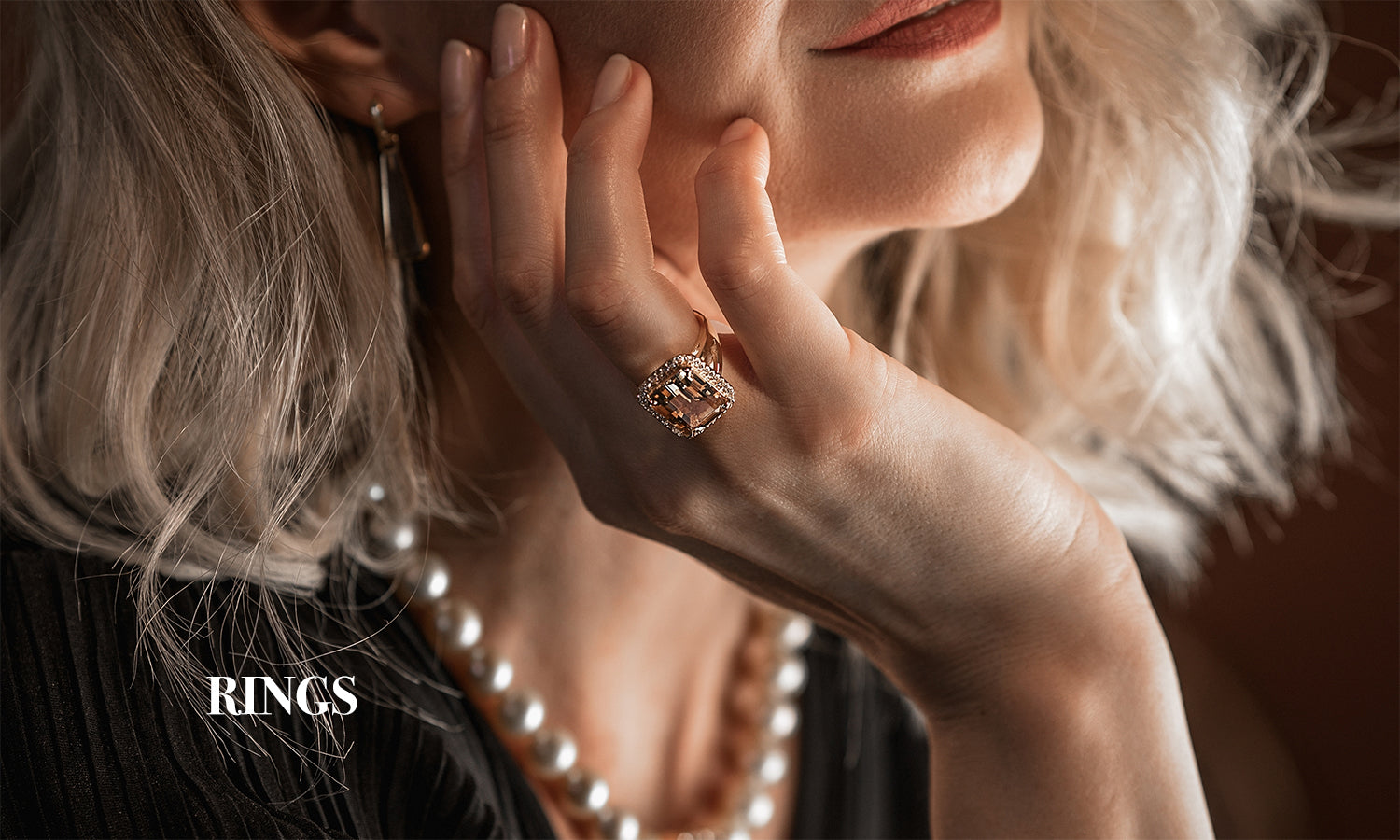
Norse Jewelry: Symbols, Meanings, and Designs Explained
Share
Norse jewelry has gained popularity over the years, not just for its unique designs, but for the deep symbolism and rich mythology it carries. Rooted in the Viking era, these pieces often reflect the ancient Norse culture, beliefs, and craftsmanship. From powerful amulets to intricately designed pendants, Norse jewelry is both beautiful and meaningful. In this article, we’ll dive into the common symbols, their meanings, and the popular designs seen in Norse-inspired jewelry today.
|
Symbol/Design |
Meaning |
Common Jewelry Type |
|
Mjölnir (Thor's Hammer) |
Strength, protection, defense against evil |
Pendants, necklaces |
|
Valknut |
Connection between life, death, and the afterlife |
Pendants, rings |
|
Yggdrasil (Tree of Life) |
Life, growth, balance, and interconnectedness |
Pendants, necklaces |
|
Runic Symbols |
Mystical meanings like protection, wealth, or guidance |
Rings, pendants, bracelets |
|
Dragons and Serpents |
Power, mystery, and protection |
Arm rings, necklaces, pendants |
|
Wolves (e.g., Fenrir) |
Strength, loyalty, and fearlessness |
Rings, pendants, bracelets |
|
Odin’s Ravens |
Wisdom, intelligence, and guidance |
Pendants, earrings, rings |
|
Thor’s Hammer Pendants |
Symbol of protection and strength |
Pendants, necklaces |
|
Viking Arm Rings |
Wealth, honor, and allegiance |
Arm rings, bracelets |
|
Rune Engraved Rings |
Personal protection, fortune, or love |
Rings, arm rings |
|
Yggdrasil Pendants |
Unity, harmony, and connection to nature |
Pendants, necklaces |
History of Norse Jewelry

Norsemen, or Vikings, were skilled artisans, creating jewelry for both men and women. Jewelry was not only worn for adornment but also served as a symbol of social status, power, and protection. The materials used ranged from simple bone and iron to precious metals like gold and silver. Pieces were often engraved with important symbols and runes that held spiritual significance.
Common Norse Symbols in Jewelry

Celtic Wolf and Tree of Life Pendant Necklace - Viking Inspired Men's – Planderful Shop
a. Mjölnir (Thor’s Hammer)
One of the most iconic symbols in Norse mythology is Mjölnir, the hammer of Thor, the god of thunder. Mjölnir represents strength, protection, and the defense of Asgard, the realm of the gods. Viking warriors wore Thor's hammer pendants to invoke protection during battle, and today it remains a popular symbol in Norse jewelry for those seeking strength and resilience.
b. Valknut (The Knot of the Slain)
The Valknut is composed of three interlocking triangles and is often associated with the god Odin and the afterlife. It's believed to symbolize the journey of the soul after death and the connection between life, death, and rebirth. This symbol is frequently seen in pendants and rings, representing eternal life and the bravery of fallen warriors.
c. Yggdrasil (The Tree of Life)
Yggdrasil is the great world tree in Norse mythology that connects all realms of existence. It symbolizes life, growth, and interconnectedness. Norse tree of life pendants are popular for those who appreciate nature and the balance of the universe. The tree's branches reaching towards the sky and its roots deep in the earth make it a perfect symbol of harmony.
d. Runic Symbols
Runes were the alphabet of the ancient Norse people, but they also carried magical significance. Each rune had a specific meaning, often related to fate, protection, or guidance. Jewelry with runic engravings is popular for its mysticism and protective qualities. For example, the Algiz rune is a common protective symbol in jewelry, while the Fehu rune represents wealth and success.
Meaning Behind Norse Designs

Viking Crow Necklace with Moon Alloy Pendants for Men – Planderful Shop
Norse jewelry often features designs inspired by animals, gods, and mythological events. Here are some common motifs and their meanings:
- Dragons and Serpents: These creatures symbolize power, mystery, and protection. Dragons, such as Jörmungandr (the Midgard Serpent), were feared and revered by Vikings.
- Wolves: The wolf is a significant animal in Norse mythology, with the most famous being Fenrir, the great wolf destined to bring about Ragnarok. Wolf-themed jewelry often symbolizes strength, loyalty, and fearlessness.
- Odin’s Ravens (Huginn and Muninn): These ravens represent Odin’s thoughts and memory. Jewelry featuring ravens is associated with wisdom, intelligence, and guidance.
Popular Norse Jewelry Designs

Viking Celtic Knot Titanium Steel Ring for Men – Elegant Stainless Ste – Planderful Shop
Norse jewelry has been modernized over the years, but many designs still stay true to ancient Viking traditions. Some of the most popular pieces include:
a. Thor's Hammer Pendants
Thor's hammer pendants are among the most recognizable Norse jewelry designs. They are often crafted in silver or bronze, with detailed engravings that bring out the hammer’s form. This piece is commonly worn as a symbol of protection and strength.
b. Viking Arm Rings
Arm rings were worn by Viking men as a sign of wealth, allegiance, and honor. They were often made of twisted metal, like gold or silver, and some even had runes or animal designs carved into them. Today, Viking arm rings are stylish accessories with a deep cultural background.
c. Rune Engraved Rings
Rings with runic inscriptions are popular for their personal and mystical touch. Whether it’s a single rune or an entire inscription, these rings are often made of silver, gold, or bronze. Each rune carries a specific meaning, allowing the wearer to choose the protection, fortune, or love they wish to channel.
d. Yggdrasil Pendants
Tree of life pendants are a timeless piece, reflecting the wearer’s connection to nature and the universe. These are typically designed in a circular form, with the branches and roots spreading throughout the design, symbolizing unity and harmony.
The Revival of Norse Jewelry in Modern Times

Viking Pirate Wolf Head Necklace with Thor Hammer Pendant - Men's Nord – Planderful Shop
Norse jewelry is no longer exclusive to Viking history buffs or mythology enthusiasts. With the rise of TV shows like Vikings and The Last Kingdom, Norse culture has experienced a modern revival. People are drawn to the symbolism and rugged beauty of these pieces. Today, Norse jewelry is often worn as a statement piece, a token of protection, or a way to honor Viking heritage.
Conclusion
Norse jewelry is more than just a fashion statement—it's a window into the ancient world of the Vikings, where every symbol and design tells a story. Whether you’re drawn to the power of Thor’s hammer, the wisdom of Odin’s ravens, or the life-giving tree Yggdrasil, wearing Norse jewelry allows you to carry a piece of this rich, mythological tradition with you.
Q & A
Q: What is the significance of Mjölnir (Thor's Hammer) in Norse jewelry?
A: Mjölnir, known as Thor's Hammer, is one of the most iconic symbols in Norse mythology. It represents strength, protection, and the defense against evil. Viking warriors often wore Mjölnir pendants to invoke Thor's protection during battles. Today, it remains a popular motif in jewelry, symbolizing resilience and safeguarding.
Q: What does the Valknut symbol represent?
A: The Valknut consists of three interlocking triangles and is associated with the god Odin and themes of life, death, and the afterlife. It is believed to symbolize the journey of the soul and the connection between different realms of existence. This symbol is commonly found in pendants and rings, representing eternal life and the bravery of fallen warriors.
Q: Can you explain the meaning of Yggdrasil in Norse jewelry?
A: Yggdrasil, the Tree of Life, is a central figure in Norse cosmology, connecting all realms of existence. It symbolizes life, growth, balance, and interconnectedness. Jewelry featuring Yggdrasil often appeals to those who appreciate nature and the harmony of the universe, serving as a reminder of the wearer's connection to all living things.
Q: What are runes, and why are they used in Norse jewelry?
A: Runes are characters from the ancient Norse alphabet, each carrying specific meanings and believed to possess magical properties. In jewelry, runes are often engraved to invoke protection, wealth, guidance, or other desired attributes. For example, the Algiz rune is associated with protection, while the Fehu rune symbolizes wealth and prosperity.
Q: What is the significance of dragon and serpent motifs in Norse jewelry?
A: Dragons and serpents in Norse mythology symbolize power, mystery, and protection. Creatures like Jörmungandr, the Midgard Serpent, were both feared and revered by the Vikings. Jewelry featuring these motifs embodies these qualities, often serving as talismans for strength and safeguarding.
Q: Why are wolves featured in Norse jewelry designs?
A: Wolves hold significant meaning in Norse mythology, with figures like Fenrir, the great wolf associated with Ragnarok. Wolf-themed jewelry symbolizes strength, loyalty, and fearlessness, reflecting the formidable nature of these creatures and their roles in mythological narratives.
Q: What do Odin’s ravens represent in Norse jewelry?
A: Odin's ravens, Huginn (thought) and Muninn (memory), symbolize wisdom, intelligence, and guidance. Jewelry depicting these ravens is associated with the pursuit of knowledge and the ability to navigate life's challenges with insight, honoring Odin's quest for wisdom.
Q: Are there any cultural considerations to keep in mind when wearing Norse jewelry?
A: While Norse jewelry is admired for its aesthetic and symbolic value, it's important to approach these symbols with respect for their cultural and historical significance. Some symbols have been misappropriated in modern contexts, so understanding their origins and meanings helps ensure they are worn in an informed and respectful manner.
By exploring these symbols and their meanings, you can choose Norse jewelry that resonates with your personal values and connects you to the rich tapestry of Viking history and mythology.




